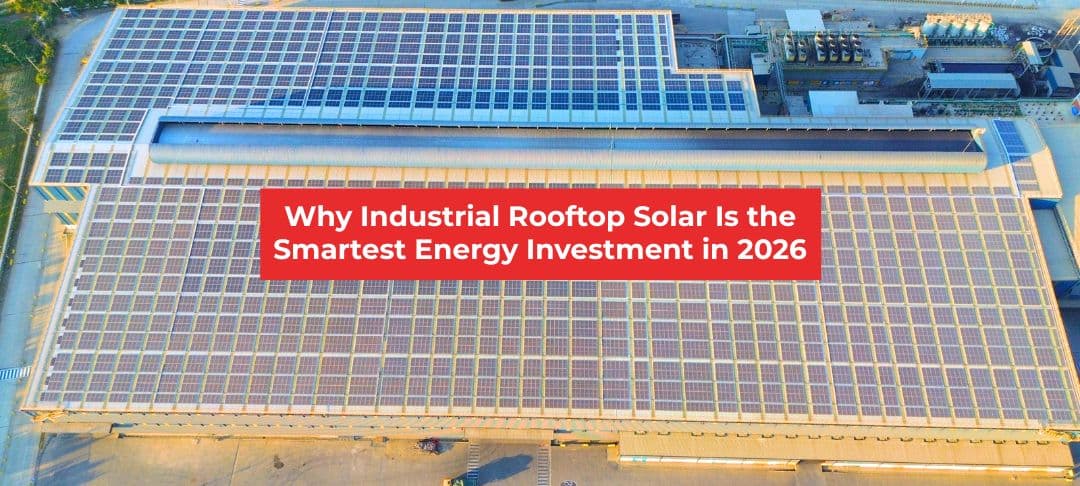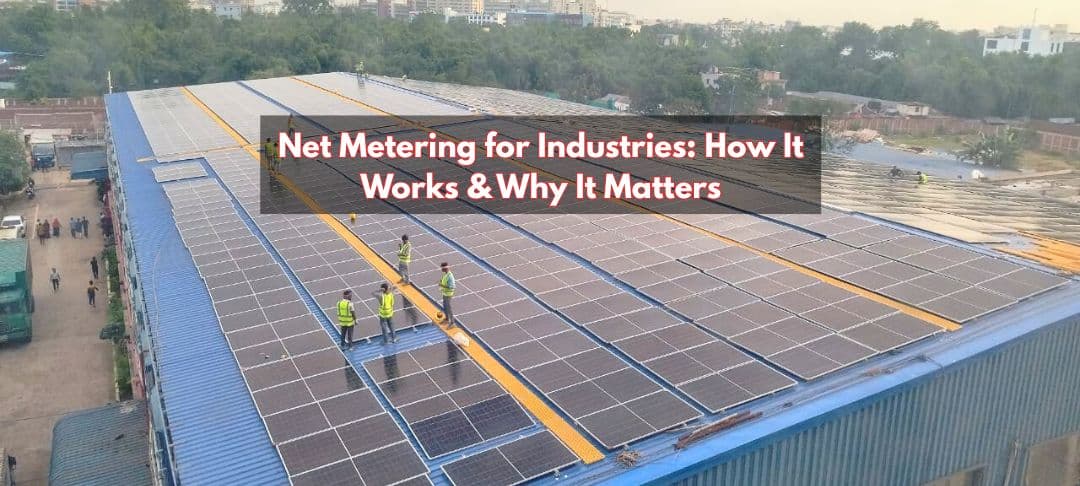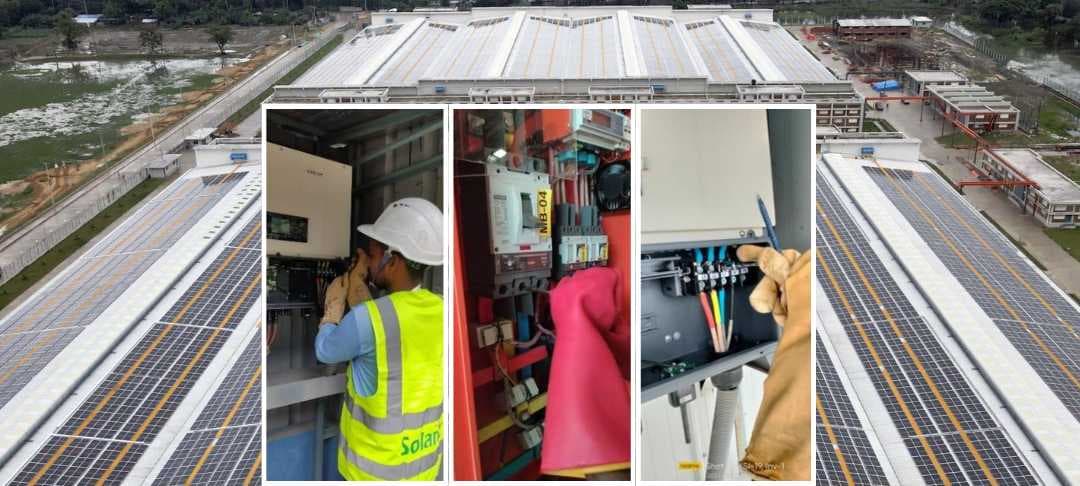Solar Panel Explained
Published at - August 18, 2021
Every day when the sunray penetrates the earth, it brings enormous energy with it. Every day our planet gets 173 thousand terra-watt of energy from the sun. This enormous energy is the primary source of energy for our planet. Plants gain their energy from solar through a process called photosynthesis. Animals, on the other hand, can’t directly gain energy from the sunlight. They depend on secondary sources. We, Homo sapiens, who are on our watch the only intellectual beings of the planet, can use this power differently. We have the ability and the necessary technology to transform one power to another. Thus, solar panels are the technology to transform solar energy to electric energy.

What is a Solar Panel?
In simple terms, a solar panel is a technology by which solar energy is converted to electric energy. In a more technical definition, a solar panel is a photo-voltaic module (also known as PV module), which includes a number of photo-voltaic cells mounted in a framework for installation. These cells receive sunlight, converting the energy received to electric energy. Solar Panels are used in solar power plants to generate electricity from sunlight and supply them where needed.
What is a Solar Panel Used for?
 A solar panel is used for generating electric energy from solar energy. According to the conversion of energy law, we cannot generate or destroy energy, we can only convert it. The solar panel is a sophisticated technology by which we can convert solar energy to electric energy.
It is considered an alternative to fossil fuel. Solar energy, often referred to as green energy, is renewable energy. It is also cost saving and beneficial for the environment.
A solar panel is used for generating electric energy from solar energy. According to the conversion of energy law, we cannot generate or destroy energy, we can only convert it. The solar panel is a sophisticated technology by which we can convert solar energy to electric energy.
It is considered an alternative to fossil fuel. Solar energy, often referred to as green energy, is renewable energy. It is also cost saving and beneficial for the environment.
What is a Solar Panel Made of?
What you imagine when you see a solar panel is not actually a solar panel. That is a solar array. A solar array is made of solar panels and solar panels are made of solar cells. A solar cell is the main unit of a function here.
A solar cell is made of many parts. The most important parts are the Protective frame, glass frame, anti-reflective coating and the P/N junction.
While the main function of electricity generation occurs in the P/N junction, the rest of the parts are necessary to increase its effectiveness and protect it from unwanted decay and damage.
The glass is an insulator. It's not going to conduct any noticeable electricity. It's transparent and therefore the light passes through it. It protects the rest of the cell by keeping any undesirable particles from reaching the cell. It reflects a minimal amount of light (5% in most cases) and lets most of the light in.
 The anti-reflective coating is really important. It makes the cell look dark and therefore the light gets in but is prevented from reflecting back. As the semiconductor underneath is shiny it will reflect 30% of the light rays back. Thus, the anti-reflective coating is really necessary to prevent the light from bouncing back.
The anti-reflective coating is really important. It makes the cell look dark and therefore the light gets in but is prevented from reflecting back. As the semiconductor underneath is shiny it will reflect 30% of the light rays back. Thus, the anti-reflective coating is really necessary to prevent the light from bouncing back.
The P/N junction generates electricity from the light rays. In addition to that, we might also need a storage device to convert the DC current to AC current. Batteries or capacitors may be useful in this case.
How Do Solar Panels Work?
The main functioning part of a solar cell is the silicon cell. Solar cells are the building blocks of solar panels. The most common solar cells are made of a metalloid called silicon, the second most abundant semiconductor on the earth. Silicon, in its pure form, doesn’t make a good semiconductor, as it has no spare electron. However, if we mix a small amount of Boron and Phosphorus in the silicon crystal, in a process called doping it is efficient in producing energy.
In crystalline silicon, four strong bonds keep all the silicon together in such a manner that the electrons are kept in place. Therefore, they can’t move and can’t create electricity. When we mix a small amount of phosphorus with it, which has one extra electron, the crystal has surplus electrons to move freely. However, the movement is random and inefficient to generate electricity. If we mix Boron, another matter which has three electrons in the outer layer, the crystal attains blank spaces devoid of electrons. This structure becomes charged but just like Phosphorus doping, it is not efficient in generating electric current. As the phosphorus-doped silicon has surplus electrons, it can work as negatively charged, and the boron-doped silicon can be used as positively charged as it has a black space. We can name these two doped crystal n-type silicon and p-type silicon respectively.
 What we need is an imbalance in voltage by which electrons will flow in a specific way generating electricity. If we create a junction with N-type and P-type, the electron will flow in a specific way and generate electricity. The junction is known as the P/N junction. This is the basis of a solar cell.
What we need is an imbalance in voltage by which electrons will flow in a specific way generating electricity. If we create a junction with N-type and P-type, the electron will flow in a specific way and generate electricity. The junction is known as the P/N junction. This is the basis of a solar cell.
This is how it works- The P/N junction needs the energy to unbind an electron and the sun provides that energy. Lights that penetrate the earth's atmosphere are tiny particles called Photons. It can knock the electron off the bond, leaving a hole. The negatively charged electrons that were at the positively charged hole are now free to move. However, because of the electrified P/N junction, they will travel only one way. The electron draws the positively charged side while the hole is drawn to the negatively charged side. The mobile electron is therefore the desired electricity which is collected by a metal finger. From there they are delivered through the external circuit, doing electrical work. Then they return to the collective aluminium sheet to the back.
A silicon cell is not enough to generate enough electricity. It only creates half a volt of electricity. However, if we set them together to create a solar module it can be effective to generate sufficient electric current. 12 Photo-voltaic cells are enough to charge a cell phone. To generate enough electricity to run a household, we need more solar panels than that.
What are the three types of Solar panels?
The three types of solar panels are monocrystalline, polycrystalline, and thin-film solar panels. The first two types are basically crystalline solar panels. The Monocrystalline solar panel is made of monocrystalline solar cells which is made with a single crystal of silicon, where the single crystal of silicon is of high purity in the same way as a semiconductor.
PolyCrystalline or MultiCrystalline solar panels are solar panels that consist of several crystals of silicon in a single PV cell. It is made by pouring molten silicon into a cast. It gives an imperfect mosaic surface and square shape.
Between these two silicon panels, the monocrystalline silicon panel is more effective than the polycrystalline silicon, while the polycrystalline silicon is more cheap and eco-friendly.

The monocrystalline silicon has a larger surface area that covers more sun rays than polycrystalline silicon. Also, the silicon nitride coating, diffusion of top surface by phosphorus and metal conductors on the cell gives the monocrystalline efficiency above polycrystalline.
A thin-film solar cell is a solar cell that is made by attaching a thin film of photovoltaic materials on a substrate like glass, plastic or metal. Being less efficient and powerful but simpler than PolyCrystalline and MonoCrystalline solar panels, it is often used in several technologies, such as CdTe, CIGS and a-S.



